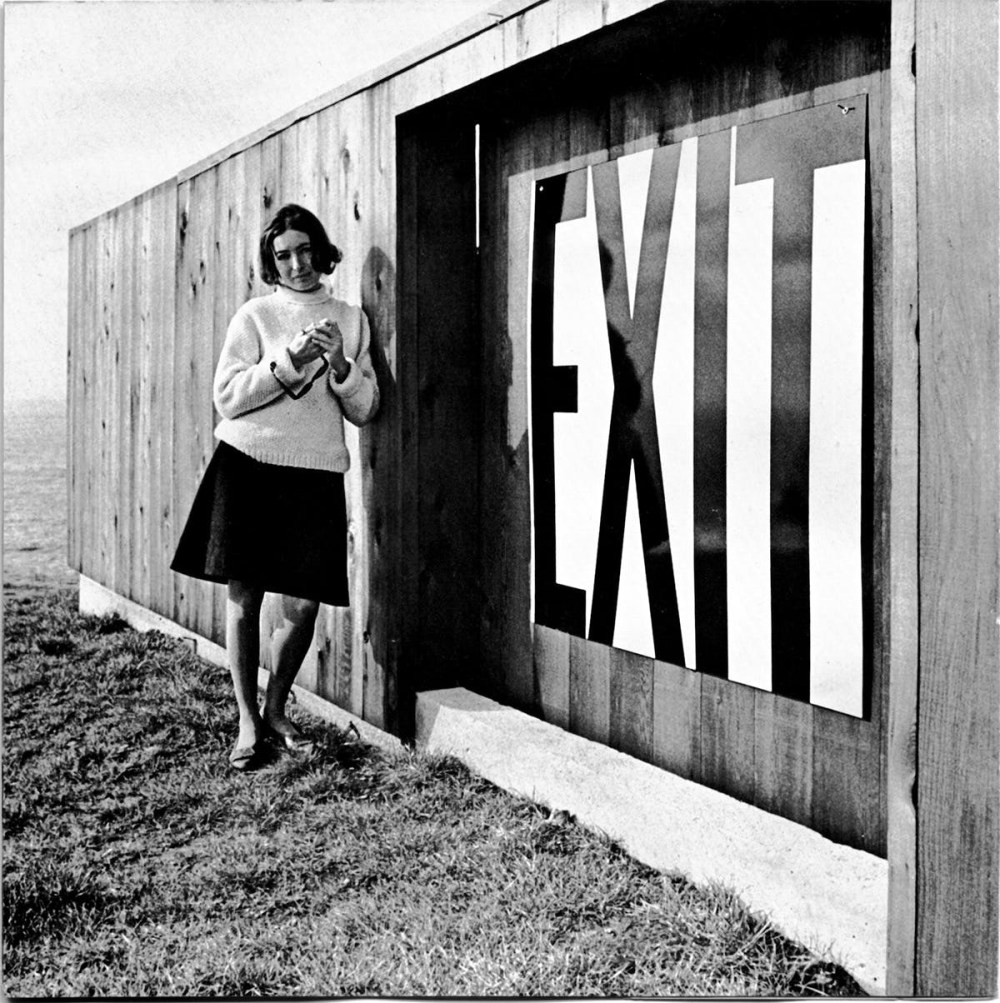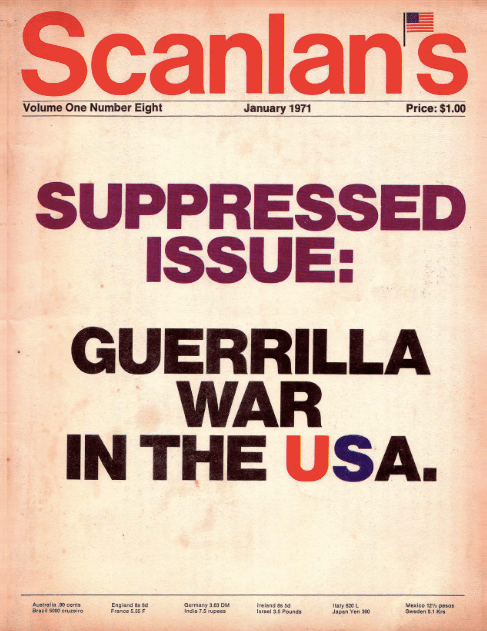On May 11, The New York Times published an obituary about a pioneer of graphic design who many, particularly on the East Coast, may not have known much about.
The following excerpt from The Moderns by Greg D’Onofrio and me is a testament to Stauffacher Solomon’s incomparable legacy. The doyen of California modern design died on May 7 at 95.

“Learn some rules,” Armin Hofmann said. “Follow them. Later, if you’re brilliant enough, you can break all the rules. Fine. If not, you will be competent at your profession.” Barbara Stauffacher Solomon mastered the rules.
Under the tutelage of modern Swiss masters in Basel, she became an early and devout practitioner of Swiss Style design starting in the late ’50s. In the early ’60s, she brought these ideas to America, merging them with a bold, expressive and enthusiastic California spirit and pioneering the world of large-scale forms, murals, and signage—supergraphics.
“I was a Californian. I went back to San Francisco and I broke all the rules. My designs were bigger and bolder than my Swiss classmates’ solutions had been. Give me a big white wall and I covered it with big red stripes,” she recalled. She may have been the first American designer to use Helvetica. In San Francisco, “local typesetters used Times Roman, Baskerville, Garamond, Caslon, Bodoni or Wild West-style typefaces,” she said, and “hippies painted squiggles, free, loose and sexy.” For her own letterhead, she typed and specced the text as 10-point Helvetica Medium and mailed it to a friend in Switzerland, as no American typesetters had the typeface. When she received the proofs from Basel, she cut and pasted the type and prepared a mechanical, which she sent to the printer. “My designs were the antithesis of the psychedelic hippy posters made in the Haight-Ashbury,” she said.

Solomon met architect Al Boeke, who was developing a new kind of self-governed, cohesive community—he called it Sea Ranch. This was her first big job; she designed the logo and all printed matter with Helvetica. She used pure colors to paint simple geometric and energetic shapes on the weathered wood of the buildings—giant waves, vertical and angled stripes, circle, arrows, and red hearts—along with signage in large, all-capital letters. “In this superworld … I combined the supersized enthusiasm of California Abstract Expressionism with hard-edge Swiss graphics, and ended up with … supergraphics,” she said. The Sea Ranch opened in 1967, and Solomon’s work was received with fanfare.

From The Daily Heller: Scanlan’s, designed by Stauffacher Solomon, was decidedly more modern-minimalist in the International or Swiss style—which is just what editor Warren Hinckle III wanted. Solomon had known Hinckle socially before he asked her to be art director of Scanlan’s. Her friend June Oppen Degnan (sister of the poet George Oppen) introduced them. Degnan had also given Hinckle $25,000 to help start the magazine.
“Warren and I meet at her political/socialite dinner parties,” Solomon recently recalled. “There were lots of parties in those days.” Hinckle’s office was bedlam back then. So to be able to work without constant interruptions, “Warren and I worked mostly at my office at 1620 Montgomery St. Warren arrived with piles of copy and loose photos and we put it all together, page after page, on my desks and floor.”
Solomon’s Scanlan’s design was unique for counter-culture publications at the time. Although Swiss Modernism was a common corporate design language, it was foreign in this context. Solomon said she practiced “Swiss graphics as I learned from Armin Hofmann in Basel. Warren was familiar with the work I did,” which included the SFMOMA monthly bulletins, books for Lawrence Halprin, brochures and covers for New Directions. “He had a sharp eye for design but never told me what to do.” And then there was the Scanlan’s logo, with its distinct apostrophe: “It was intentional,” she says. “I always designed big punctuation marks. I think I drew it for some reason and Warren said, ‘That’s it.’”

